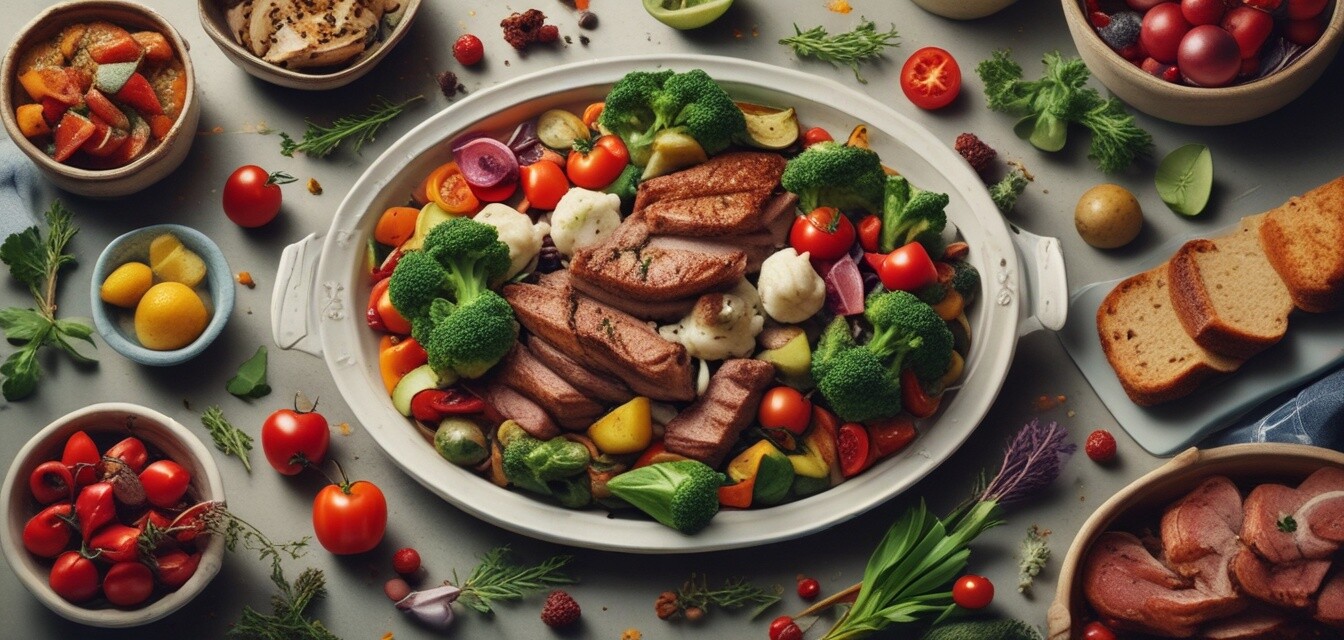
Disclosure: The FTC requires that this article indicate that it was created using AI and is not based on personal experience. It includes affiliate links, which means we may earn a commission if you purchase through these links at no extra cost to you. As Amazon Associates, we earn from qualifying purchases. Product recommendations and endorsements were generated by AI and do not reflect personal opinions or real-world use.
Balancing Flavors in Large Dishes
Key Takeaways
- Understanding flavor profiles is essential for cooking for large groups.
- Using fresh herbs and spices enhances the overall taste of large dishes.
- Balancing salty, sweet, sour, and bitter flavors creates a more enjoyable eating experience.
- Portion control is key when trying out new flavors to avoid overpowering the dish.
- Make use of various cooking methods to achieve different flavor depths.
Cooking for large groups can be a rewarding experience, but it also comes with its challenges, particularly when it comes to balancing flavors. Whether you're preparing for a family gathering, a community event, or a corporate function, ensuring that your dishes are well-seasoned and flavorful can significantly enhance the meal's enjoyment. In this article, we'll explore effective techniques to create crowd-pleasing dishes that maintain a perfect balance of flavors.
Understanding flavor profiles
When cooking for groups, it's essential to have a good grasp of basic flavor profiles. In culinary terms, the main flavor components are:
| Flavor Type | Characteristics | Examples |
|---|---|---|
| Salty | Enhances other flavors, adds depth | Salt, soy sauce, cheese |
| Sweet | Balances acidity and bitterness | Sugar, honey, fruits |
| Sour | Adds brightness and cuts through richness | Lemon juice, vinegar, yogurt |
| Bitter | Provides complexity and depth | Dark greens, cocoa, coffee |
Understanding these basic flavors will help you create more harmonious dishes. Aim to include a small amount of each flavor type in your large meal to yield a balanced dish that appeals to a wide array of palates.
Using fresh herbs and spices
Fresh herbs and spices are your best friends when trying to balance flavors. They not only enhance the taste but also add a vibrant touch to your dishes. Here are some tips on how to use them effectively:
- Incorporate herbs: Herbs like basil, cilantro, and parsley can elevate your dish. Add them towards the end of the cooking process to keep their bright flavors intact.
- Choose the right spice blends: Consider using spice blends that complement the primary ingredients in your dish.
- Experiment: Don’t be afraid to try different herbs and spices. A small amount can go a long way in creating a new flavor profile that's sure to impress.
Balancing salty, sweet, sour, and bitter flavors
Achieving the right balance of salty, sweet, sour, and bitter flavors is crucial for making dishes that appeal to everyone at the table. Here’s how to create that balance:
- Start with a base: Begin by selecting a base flavor, whether it's savory meat, a hearty vegetable, or a rich sauce.
- Gradually layer flavors: As you add ingredients, taste and adjust as you go. This allows you to refine the overall flavor profile.
- Use acid to brighten: A splash of vinegar or a squeeze of citrus can brighten up rich dishes.
- Balance sweetness: If a dish turns out too salty or sour, consider adding a touch of sweetness to even it out.
Portion control and flavor testing
When cooking for a large group, it’s easy to get carried away. Here are some techniques to ensure you don't overpower flavors:
- Start small: When trying new flavors, begin with a smaller batch to test before cooking in bulk.
- Taste frequently: Keep tasting your dish throughout the cooking process to adjust flavors as needed.
- Use a flavor wheel: A visual tool can help you identify other flavors that might work well together.
Cooking methods for flavor depth
Diverse cooking methods can enhance the flavors in your dishes in various ways. Here are some methods you might consider:
| Cooking Method | Flavor Enhancement |
|---|---|
| Grilling | Adds a smoky depth |
| Roasting | Caramelizes natural sugars for sweetness |
| Steaming | Preserves food’s natural flavors and nutrients |
| Sautéing | Brings out the natural starches in food, enhancing sweetness |
Conclusion
Cooking for large groups is an art that, when mastered, can lead to unforgettable meals. By understanding flavor profiles, utilizing fresh herbs and spices, and balancing various flavors, you can create delightful dishes that satisfy every palate. Remember to take your time, taste frequently, and don’t hesitate to experiment with different cooking methods. For more tips on cooking for large groups, check out our other articles on Tips and Techniques or explore our comprehensive Commercial Grade Cooking Products.
Pros
- Enhances both taste and presentation of large dishes.
- Increases guest satisfaction with flavors everyone loves.
- Encourages creativity in the kitchen.
Cons
- Finding the right balance can be tricky.
- Keen attention to flavors needed can slow down cooking times.
- Requires practice to master flavor balancing.